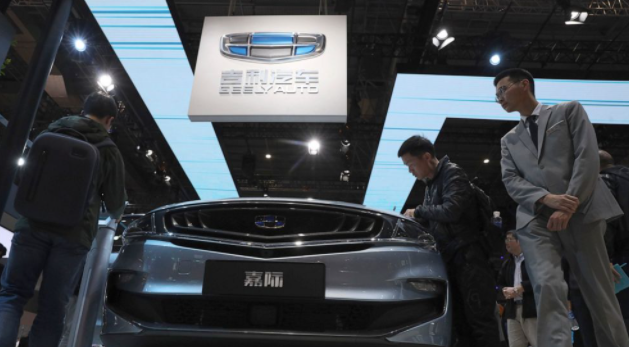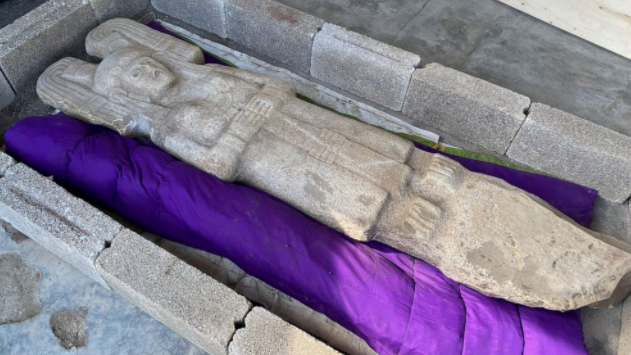The COVID-19 pandemic has taken center stage in 2020, but medical experts want to remind Americans to get their yearly flu shots this winter season.
There is a palpable sense of hope as Pfizer begins to distribute its COVID-19 vaccine, with Moderna awaiting its own vaccine authorization this week. Throughout the winter and into the spring, millions of doses of both vaccines will be distributed across the country.
And if you haven’t already, the Centers for Disease Control and Prevention say there’s still time to get your flu shot this winter. Experts say that getting both a COVID-19 vaccine and the flu vaccine shouldn’t be a problem, but it might be a good idea to space those vaccinations out a few days to a few weeks apart.
“It makes sense to get the flu shot as we normally would recommend every year and it is no different this year,” Dr. Todd Ellerin, head of the Infectious Disease at South Shore Health in Massachusetts, said in an interview with ABC News. “In fact, we want to double down this year because we want to prevent the combination of the flu and COVID-19.”
The CDC is urging “healthcare personnel [to] use every opportunity during the influenza vaccination season to administer influenza vaccines to all eligible persons.” This is hardly surprising as the flu claimed the lives of 22,000 Americans last year.
Meanwhile, the U.S. is on track to get Americans vaccinated against COVID-19 by a tiered system that first prioritizes our nation’s front-line health care workers and residents of nursing homes, with a plan to eventually vaccinate any American who wants one by spring 2021.
It may be a good idea to “stagger [the injections] so if someone has reactions, you would know what the reaction is to,” said Dr. Krutika Kuppalli, vice chair of the Infectious Disease Society of America, in an interview with ABC News.
Pfizer’s clinical trials revealed that volunteers had only mild and brief symptoms in response to the vaccine. Over 5,000 volunteers had a medical history of allergies, and they too experienced only mild symptoms. The flu shot is an inactivated form of the virus with only mild side effects, including pain at the injection site.
Given the low side effect profiles, if you’re only able to take one day off of work, and you won’t be able to realistically stagger your flu shot and your COVID-19 shot, doctors say there is nothing inherently unsafe about getting both at the same time. This is because the side effects are well-understood.
“I’d probably recommend getting them on separate days, but if it meant that you might not come back and receive either one, then I would give them both at the same time,” said Ellerin. “I don’t see a contraindication to getting them at the same time.”
In fact, it is common practice to make vaccine visits an all-in-one shot, as clinicians try to save patients from extra trips to the office by grouping all the appropriate vaccines into one visit. If making two trips might not be ideal for you, ask your doctor for both shots at the same time. They will be administered in a monitored environment. Though highly unlikely, you will be treated appropriately if you were to have an adverse reaction.
If you have any questions about your eligibility for the COVID-19 or flu vaccine, your doctor should be able to help. But there are a few key considerations to keep in mind.
For example, if you’ve recently recovered from COVID-19, experts recommend waiting at least three months before getting your COVID-19 vaccine. And if you’ve recently recovered from COVID-19, or any other illness, wait at least 10 days after you are symptom-free to get your flu shot. Some people who are immunocompromised or who suffer from severe illness might have to wait longer.
“But after you are done with the contagious window, you should get the flu vaccine as quickly as possible,” said Ellerin. “Business as usual.”
Even if you’ve already had the flu, there are different types of flu viruses, and getting one does not necessarily protect you from the others. “Even if you have had the flu, you should still have the vaccine because it will cover the other strains,” recommended Wildes.
Studies show that while it’s rare to be infected with the COVID-19 virus and the flu virus at the same time — the unlucky few who do experience a double infection are more likely to become extremely sick.
“We know from early observational studies that patients who got both and were hospitalized, those patients had a particularly severe disease,” said Ellerin. Indeed, studies found that co-infection resulted in a higher risk of a more severe illness, longer hospital stays and, by some estimates, patients were twice as likely to die.
Rising COVID-19 cases are overwhelming health care system across the nation, and the stakes are high now with COVID-19 reaching nearly 17 million cases and over 300,000 deaths in the U.S.
Given the vast benefits and few risks, “it only makes sense to continue getting the flu vaccine,” said Ellerin.









